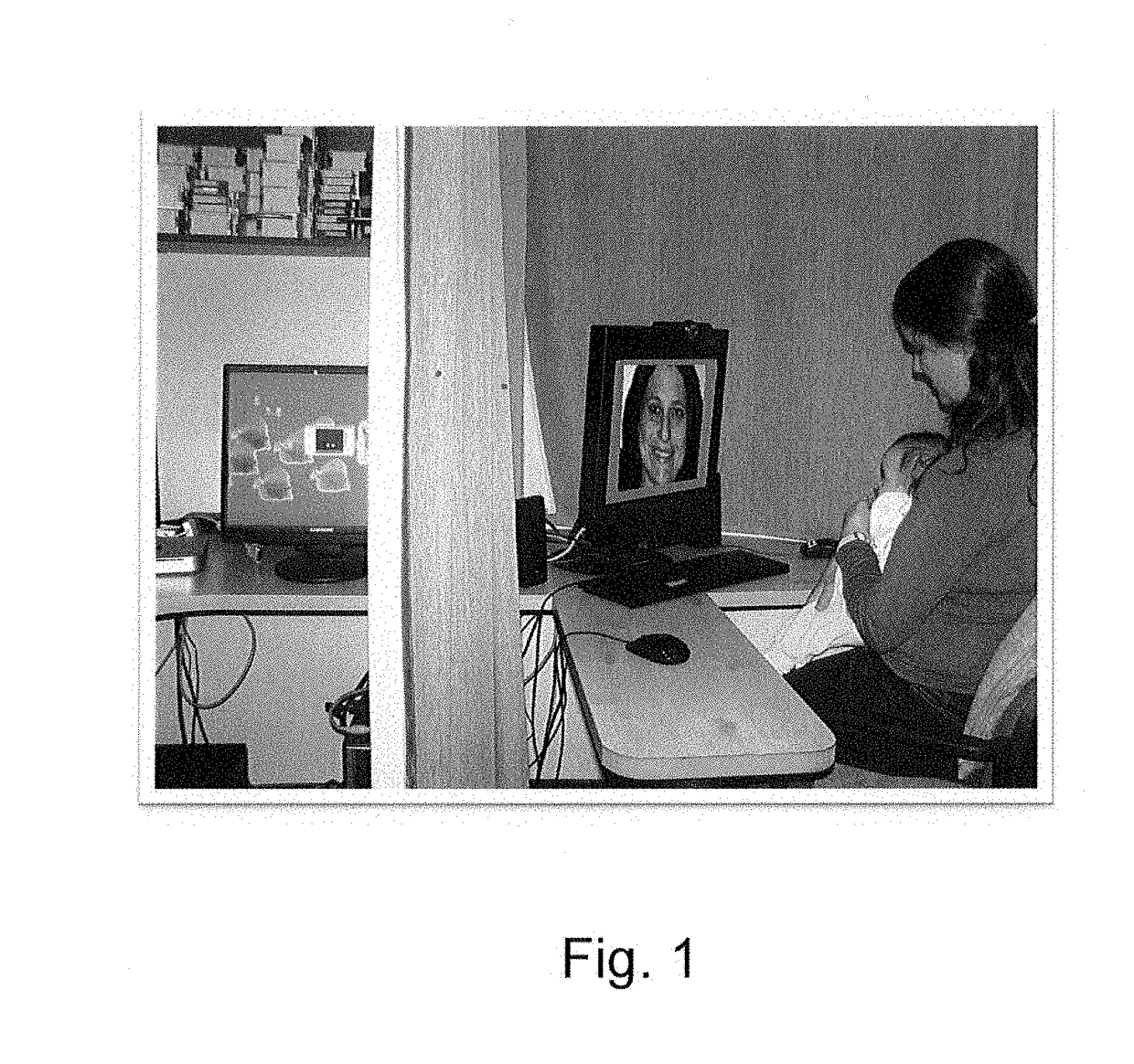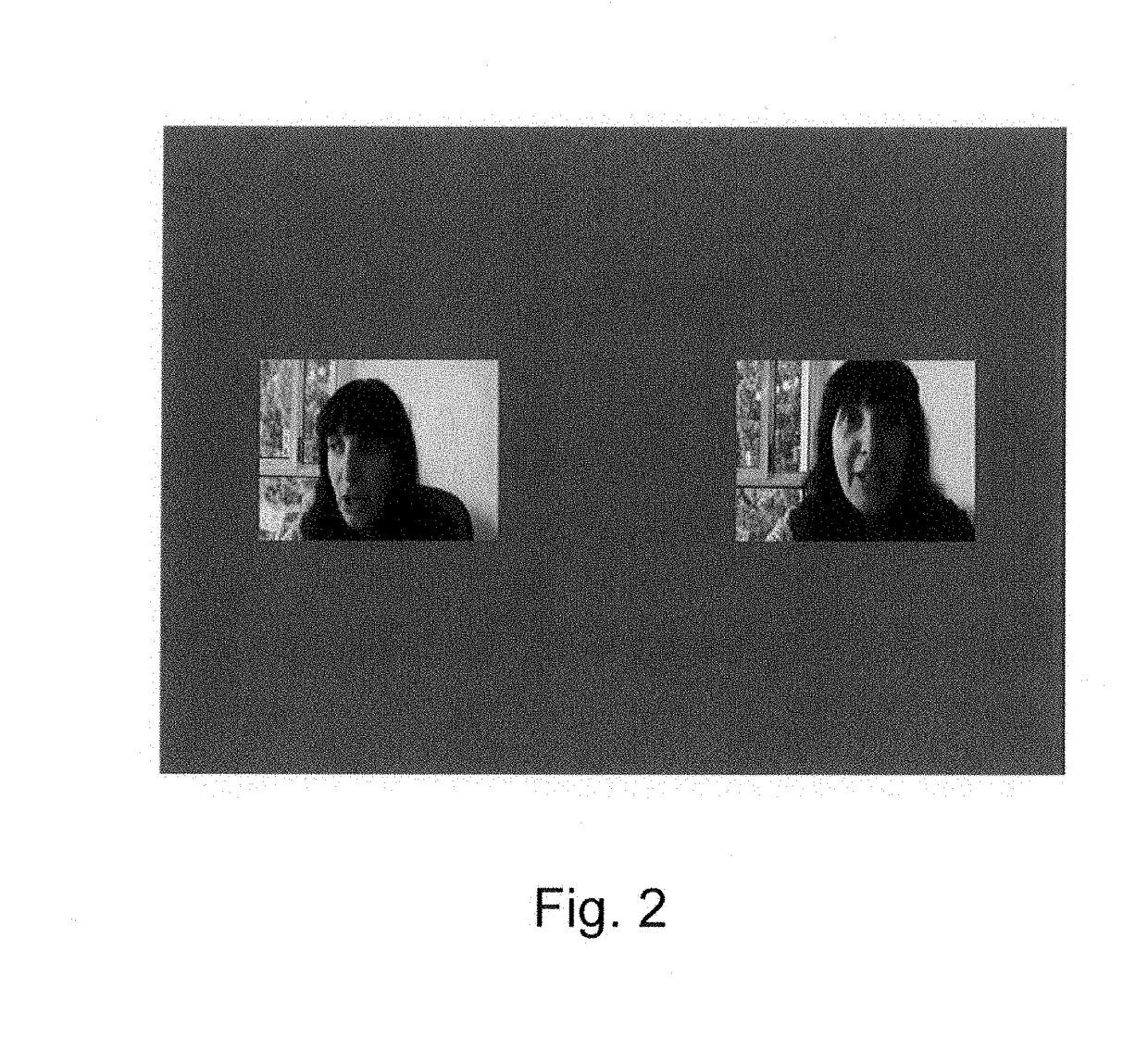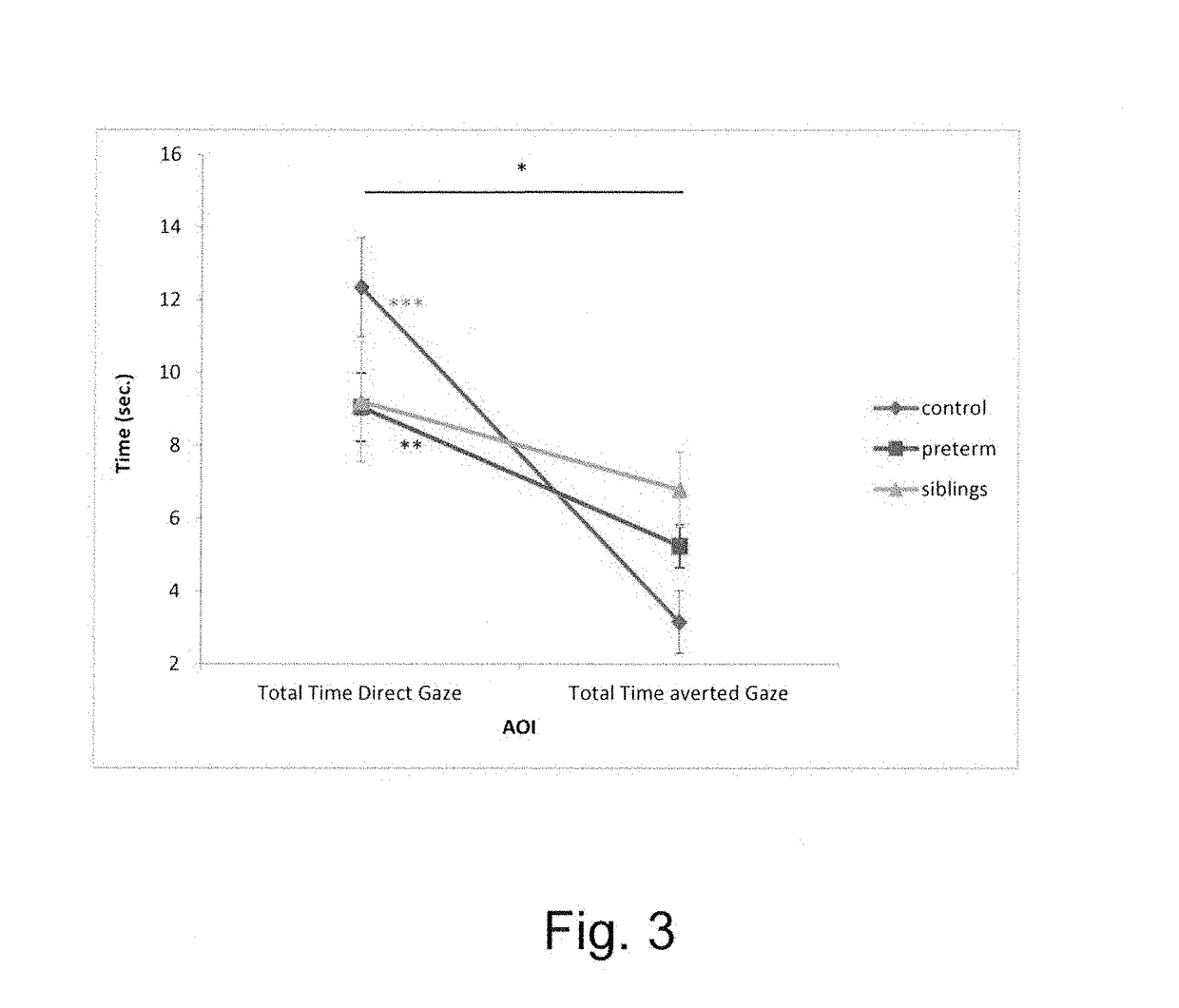Interactive system and method for the diagnosis and treatment of social communication or attention disorders in infants and children
a technology of social communication or attention disorder and active system, which is applied in the field of interactive gaze contingent system, can solve the problems of not enabling early intervention, genetic risk and prematurity birth, and prematurity birth holds another major risk factor for asd development,
- Summary
- Abstract
- Description
- Claims
- Application Information
AI Technical Summary
Benefits of technology
Problems solved by technology
Method used
Image
Examples
example 1
[0064]The aim of the study was to investigate differences in visual social preferences among two groups of 9 months, high-risk infants: infants born preterm and siblings of children diagnosed with ASD, compared to a low-risk group of infants. The study focused on one of the social aspects found impaired among individuals with ASD, namely, direct gaze preference. The behavior was measured by the infant's regulation of gaze to stimuli with socio-communicative value: social stimuli that involve opportunities for gaze contact.
[0065]Methods
[0066]Participants
[0067]The study cohort (N=114) comprised of 9 months old infants corrected age (mean=9.5, sd=0.92).
[0068]Recruitment of infants—Infants (N=61) born preterm at “Sheba” hospital were recruited for this study during the time of hospitalization (preterm group). Siblings of children diagnosed with ASD (N=18) were recruited using advertising through the Israeli Voluntary Association for ASD children (ALUT). Healthy term controls were recrui...
example 2
[0106]The aim of the study was to investigate differences in non-social visual preferences among two groups of 9 months old high-risk infants: infants born preterm and siblings of children diagnosed with ASD, compared to a low-risk group of infants. The study focused on preference for non-social stimuli distinguished by their spatial and temporal characteristics. The “simple” stimulus was a clip with high contrast, clear and simple shape and few colors (red, white, black) and was presented in high motion rate. The “complex” stimulus was a clip with lower contrast, more detailed in manners of shape and colors and was presented in slow motion rate.
[0107]Methods
[0108]As in Example 1 above.
[0109]Results
[0110]High-Risk Vs. Low-Risk Groups Differences in the Stimuli Preference
[0111]Analysis of variance with repeated measures showed marked differences as a function of group (see FIG. 5).
[0112]The ANOVA with the risk group as an independent factor with the corrected age as a covariate showe...
PUM
 Login to View More
Login to View More Abstract
Description
Claims
Application Information
 Login to View More
Login to View More - R&D
- Intellectual Property
- Life Sciences
- Materials
- Tech Scout
- Unparalleled Data Quality
- Higher Quality Content
- 60% Fewer Hallucinations
Browse by: Latest US Patents, China's latest patents, Technical Efficacy Thesaurus, Application Domain, Technology Topic, Popular Technical Reports.
© 2025 PatSnap. All rights reserved.Legal|Privacy policy|Modern Slavery Act Transparency Statement|Sitemap|About US| Contact US: help@patsnap.com



